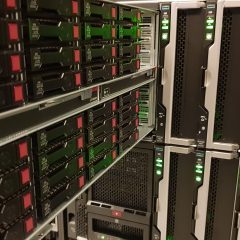Avaya / Nortel Switch Notes
KB ID 0001285 Problem I don’t often use Nortel (now Avaya) switches, I know they are decent, but in my day job I usually work on Cisco, occasionally HP, and other cheap assorted nastiness switches. I was replacing an old 10/100 Cisco 3750 switch with a Nortel 4526GTX this week, and thought I’d take some notes for the common things I do, just in case I have to do another. So this post is an eclectic collection of the...
ZyXEL – Router Setup (Public IP Range)
KB ID 0000331 Problem You have a ZyXEL router (In my case a P-600R-D1) and you want to put a device behind it with a public IP. Note: I’m assuming you have agreed with your ISP that you will receive a range of public IP addresses. With some ASDL packages the first IP in the range usually gets allocated to the router, confirm this with your ISP. BT Business Broadband Note: If you are a BT Business customer, your setup will be...
Factory Reset Juniper SRX Firewall
KB ID 0001003 Problem If you manage to stuff up your firewall, or you have just done some testing and want to revert back to ‘as new’ here is how to do it. Solution 1. Connect to the firewall either by console cable or via SSH, go to CLI mode then configuration mode. login: PeteL Password: ************ — JUNOS 12.1X47-D10.4 built 2014-08-14 22:21:50 UTC PeteL@Petes-SRX> cli PeteL@Petes-SRX> configure Entering...
HP MSM 765zl – How To Factory Reset
KB ID 0000916 Problem I had to setup some HP wireless gear again this week. It had been installed a while ago, but not used and there was some problems with it, so I elected to flatten it and start again. The handbook goes through how to factory reset it from the web management interface. That’s great if you can get to the management console, but I could not. Solution As the MSM765zl is a controller that is on a...


